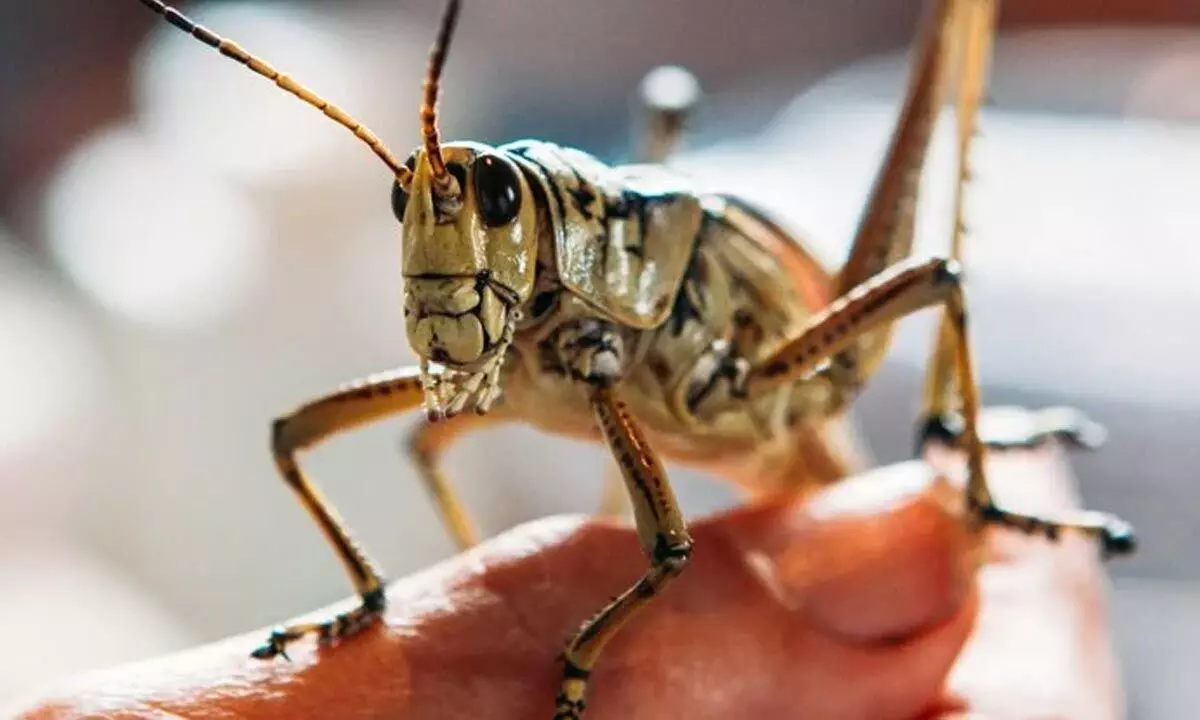Live
- IPL 2024: Shaw, Rasikh return as Delhi chose to bat first against Kolkata
- Krishna Ella new President of Indian Vaccine Manufacturers' Association
- World's 1st rigid endoscope system to help deep tissue imaging during surgery
- Global advanced smartwatch market likely to see 15 pc annual growth in 2024
- Seven Japanese varsities sign MoUs with Jindal Global University
- Malavika Mohanan reveals her dream role
- Telangana CM's first reaction after Delhi summons on fake video case
- Sriramulu is doing politics of convenience: DCM D K Shivakumar
- Rainbow Children's Clinic and BirthRight Clinic Opens in Hennur, Bengaluru
- Priyadarshi to star in quirky romantic tale
Just In
Study Revealed That Locusts Can Detect Cancer


(Alex Walker/Moment/Getty Images)
- Scientists have shown that locusts are skilled at distinguishing between healthy and cancerous human cells using their sense of smell; this could lead to options for earlier disease detection, enhancing recovery prospects.
- The insects can distinguish certain cancer cell lines, indicating that it may be possible to identify not just the presence of cancer but also its type.
Scientists have shown that locusts are skilled at distinguishing between healthy and cancerous human cells using their sense of smell; this could lead to options for earlier disease detection, enhancing recovery prospects. Even better, the insects can distinguish certain cancer cell lines, indicating that it may be possible to identify not just the presence of cancer but also its type.
There is a ton of promise if they had figure out how to use this skill in medical equipment. Its findings are encouraging for the early identification of cancer and were published on before peer review. It has been demonstrated that the locust detection, which is assessed by variations in their brain activity detected by electrodes, is accurate, sensitive, and quick, occurring in only a few milliseconds.
All of this is made possible by the volatile organic chemicals (VOCs) that we breathe out, which are known to be altered in some way by the presence of cancer interfering with particular cells' metabolic activities. The key is to recognize the change as it occurs. Enter the locust, a common insect utilized in scent study by scientists, so we already have a lot of knowledge about these creatures and their sensory abilities.
The team was able to gauge the locusts' reactions to gas samples from various cells using electrodes affixed to their brains, and they were able to create signal profiles that represented the substances they were smelling.
There were differences between the profiles generated in response to cancer cells and healthy cells. The scientists were able to confirm that the cells did, in fact, smell different to the locusts—most likely because of the airborne VOCs given off—after previously establishing that cells from mouth cancers looked different from normal cells under a microscope and attributing that to shifts in metabolites.
Due to the various VOC fingerprints produced, the researchers are optimistic that other cancer types could be identified in the same manner. When cancer is discovered at stage 4 across all types of cancer, the survival probability is approximately 10–20 percent (when it has spread to other parts of the body). That's a significant difference from malignancies that are discovered at stage 1, where patients have an 80–90% chance of surviving.
The development of "bionic nose" devices that may detect changes in VOCs is already underway, but scientists are still far from producing sensors that are as effective as those that nature has already developed. This finding might present an alternative course of action for that investigation. The team's ultimate goal is to reverse engineer the locusts' natural sniffing ability in order to "hack" the insect brain and use it for disease diagnosis. It's still early days, but the researchers can see a path toward usable detection devices.

© 2024 Hyderabad Media House Limited/The Hans India. All rights reserved. Powered by hocalwire.com






